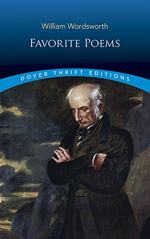
|
| Name: _________________________ | Period: ___________________ |
This test consists of 5 multiple choice questions, 5 short answer questions, and 10 short essay questions.
Multiple Choice Questions
1. Which is the best interpretation of line 6's reference to "a melancholy strain"?
(a) Hard work.
(b) A sad song.
(c) Persistent pain.
(d) A difficult burden.
2. Besides that the reaper may be singing about some terrible moment in history, what else does the speaker guess she might be singing about?
(a) Love and romance.
(b) Ordinary, everyday troubles.
(c) The beauty of the Highlands.
(d) Modern political events.
3. Who is the author of "The Solitary Reaper"?
(a) Percy Shelley.
(b) William Wordsworth.
(c) John Keats.
(d) William Blake.
4. In the fourth stanza, when the speaker finally places himself in the scene, what is it clear he is there to do?
(a) He is out walking.
(b) He is working on a farm.
(c) He is delivering supplies.
(d) He is there to confess his love for the woman.
5. What is the meaning of the word "lay" in the line "Or is it some more humble lay" (line 21)?
(a) A narrative poem written in couplets.
(b) A reclining position.
(c) A plan or pattern.
(d) Tune or song.
Short Answer Questions
1. Which line uses deliberate redundancy for emphasis?
2. What is subtly appropriate about the meter in lines 25 and 26, "Whate'er the theme, the Maiden sang / As if her song could have no ending"?
3. How does line 3, "Reaping and singing by herself," interrupt the poem's dominant metrical pattern?
4. In which stanza does the speaker make it clear that this event happened some time in the past?
5. In the lines "Perhaps the plaintive numbers flow / For old, unhappy, far-off things," what does "plaintive numbers" refer to (lines 18-19)?
Short Essay Questions
1. Summarize the action of "The Solitary Reaper."
2. Describe the tense shift in "The Solitary Reaper" and explain what it reveals about the poem's narrative present.
3. To which two birds does the speaker compare the reaper, and what area of the world does the speaker associate with each?
4. In what way do the places associated with the two birds create a dramatic contrast with one another?
5. What are the names of the two forms of poetry that are combined in this poem, and how are they combined?
6. Describe the rhyme scheme of "The Solitary Reaper."
7. What question does the speaker ask in the third stanza, and what two contrasting answers does he speculate about?
8. How does the speaker's line 26 description of the reaper singing "As if her song could have no ending" reinforce the meaning of the poem's ending?
9. Explain how the mention of "spring-time" in line 14's description of the cuckoo enhances the contrast between this image and the image of the nightingale.
10. Describe the meter of "The Solitary Reaper."
|
This section contains 1,071 words (approx. 4 pages at 300 words per page) |

|




